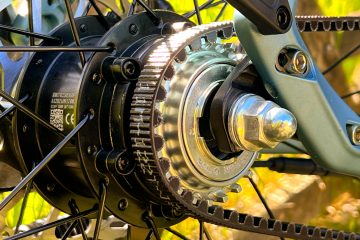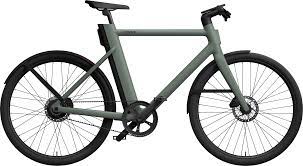I have been riding belt drive bikes for the past 5 years. Having ridden a range of the best eBikes belt drive is a great solution for an electric bike. If you are new to eBikes and belt drives our latest post is just for you. We help you understand how does a belt drive eBike work and decide if maybe right for you? This post is for anyone considering a new eBike purchase and looking at options. Using our panel of experts and network of manufacturer partners we share with you the advice you need.
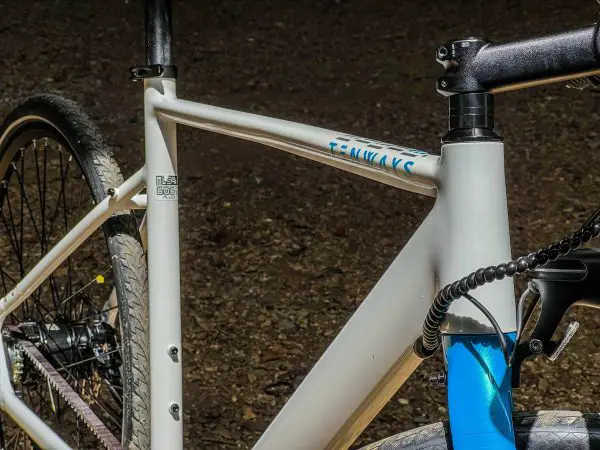
How do electric bikes work?
An eBike, or electric bike, works by using a battery-powered motor to assist the rider. Depending on the class of eBike this may be pedal assisted or non-pedal assisted.
Here is a general overview of how an eBike works:
- Power source: An eBike is powered by a rechargeable battery. The battery supplies power to the electric motor.
- Pedalling: When you pedal an eBike, the pedals turn a crankset. This crankset is connected to the rear wheel via a chain or belt drive.
- Sensor: A torque sensor on an eBike detects when you are pedalling and sends a signal to the motor.
- Motor: The motor is located in the bottom bracket of the bike frame or in the rear wheel hub. It is activated by the signal from the sensor or throttle. This signal then triggers the motor to provide additional power to assist you when pedalling.
- Control system: The eBike has a control system that allows the rider to adjust the level of assistance provided by the motor. This can be done using a control panel mounted on the handlebars or using a mobile app connected via bluetooth.
- Braking: Most eBikes have a standard braking system. This is similar to traditional bikes using rim brakes or disc brakes. Some eBikes also have regenerative braking similar to cars. This captures energy from braking and uses it to recharge the battery
It’s important to note that eBike classifications can vary by country and region. So, it’s always best to check local laws and regulations before purchasing an eBike.
If you are new to cycling you may be looking for a cycling app to help track your progress. Read our guide to how Strava works and alternatives worth considering.
What are the different classes of eBikes?
Electric bikes, also known as eBikes, are classified based on their motor power, top speed, and pedal-assist capabilities. The different classes of eBikes are:
- Class 1 eBikes: These eBikes have a motor that provides assistance only when the rider is pedalling. They are the standard eBikes available in the UK and EU able to be used legally on all roads and trails. The motor stops providing assistance when the bike reaches a speed of 16 mph (25 kph) or if the rider stops pedalling.
- Class 2 eBikes: These eBikes have a motor that can be used to propel the bike with a throttle and pedal assisted. They have a maximum speed of 20 mph (32 kph). Class 2 eBikes are also allowed on bike paths and multi-use trails. Class 2 eBikes cannot be used on roads in UK but only private land. Class 2 eBikes are legal to use in the US and certain EU countries.
- Class 3 eBikes: These eBikes have a motor up to 750Watts with throttle and pedal assistance. The motor stops providing assistance when the bike reaches a speed of 28 mph (45 kph) or if the rider stops pedaling. Class 3 eBikes are legal in all states in the US. They are not legal in the UK, EU or Australia.
- Class 4 eBikes: These Ebikes have a motor of 750Watts or higher. They provide throttle and pedal assistance up to speeds above 28mph (45 kph). Class 4 eBikes are only able to be used the US and certain parts of the world.
It’s important to note that eBike classifications can vary by country and region, so it’s always best to check local laws and regulations before purchasing an eBike.
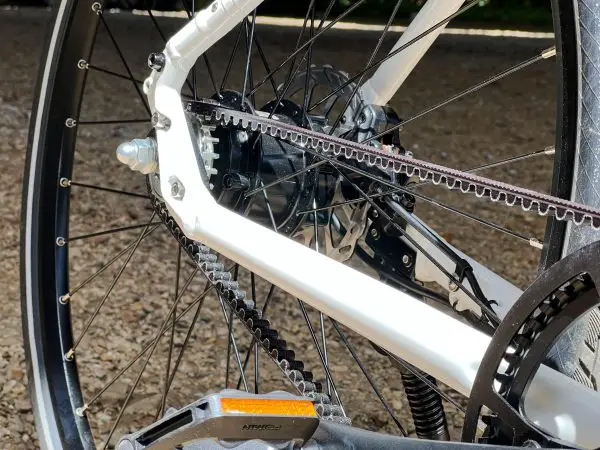
How do belt drive eBikes work?
A belt drive ebike works similar to a chain driven electric bike. It uses a belt instead of a traditional chain to transfer power from the pedals to the rear wheel. The belt drive is typically made of durable materials like carbon fibre or polyurethane. It has teeth that interlock with the gears on the bike’s rear wheel and crankset. Generally a belt drive unlike a bike chain is a single solid loop with no breaks or connections. This helps make it strong and reduces fragility.
For more details of the advantages and disadvantages of belt drive bikes please read our guide.
The electric motor of a belt drive bike is the same as a chain eBike. They use a motor in either the bottom bracket or built into the rear wheel hub. When the rider pedals, the power generated by their legs is transmitted through the belt to the rear wheel, where it propels the bike forward.
If you are thinking of buying a belt drive eBike check our 2023 guide to the 11 best belt drive eBikes. Electric bikes for every budget and cyclist.
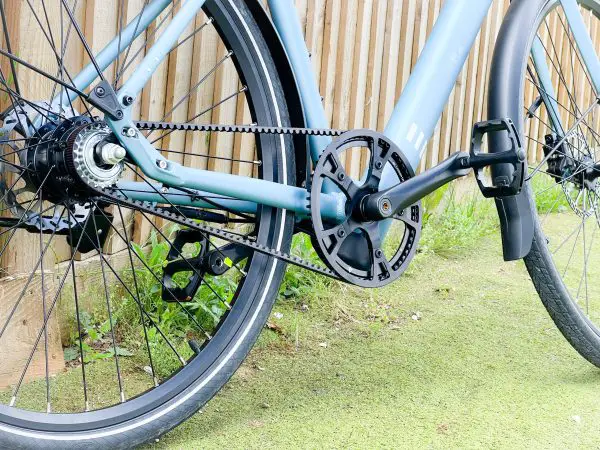
Why is a belt drive perfect for an eBike?
I’m a huge fan of belt drive bikes and eBikes. The belt drive system lends itself massively to electric bikes. Here is my list of why belt drive is perfect for an eBike.
- Belt drive works silently. Combined with a smooth electric motor means you can enjoy an uninterrupted ride.
- Belt drive is more efficient than a chain. This means it can transfer the power without loss from a motor.
- Belt drive is easier to maintain. In reality this means near zero maintenance that suits many people looking for an electric bike.
- Belt drive is suited to a bike with limited gearing. If you have a city bike it is only going to need a small range of gears. This is perfect for belt drive systems.
